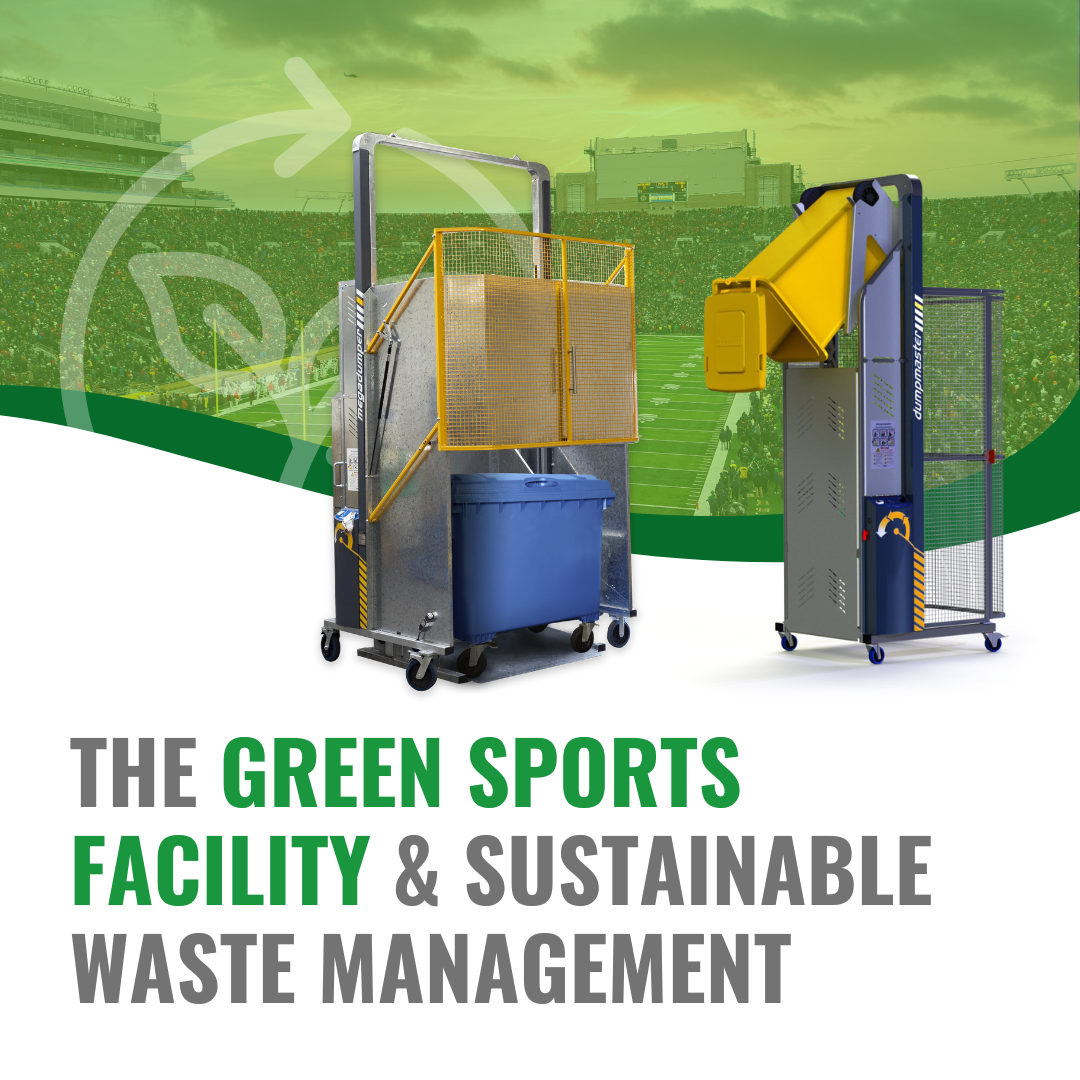We use cookies to make your experience better. To comply with the new e-Privacy directive, we need to ask for your consent to set the cookies. Learn more.
The Green Sports Facility and Sustainable Waste Management
It isn't easy to run a truly green sports facility. You have to find ways to use less water without killing the grass on the field. You have to convert to energy-efficient lighting. You might even have to choose new vendors with a focus on environmentally friendly products.

A great first step, though, is to rethink the facility's waste-management programs. Historically, professional sports stadiums and their collegiate counterparts have been heavy producers of landfill-bound trash. That's changing, largely due to the Green Sports movement.
Whether you're already part of that movement or are just testing the waters, here are a few ways to start greening waste management at any large-scale sports venue:
1. It's Not Waste, It's Material
For those in the green sports community, the challenge isn't to dispose of "waste" at the venue; it's to manage "materials." What do we mean? Well, take a fan's empty paper cup, for example. When we think of the cup as waste, it's easy to toss into the garbage can and forget. But when we use the more accurate term "material," it's a reminder that "waste" is just material we've wasted. That paper can be recycled, or compostable cups and utensils can be used and later placed into composting bins.
2. Start or Enhance Your Recycling Program
Recycling may not be as preferable as source reduction or reuse, but it's still a very important part of any sustainable materials management effort. As the EPA reminds us, the recycling loop requires three distinct steps: First, you must collect the recyclables; second, those recyclables have to be used as materials in new products; and third, someone has to buy that new product.
The sports facility can contribute greatly to the first and third steps in this system. Conveniently placed recycling bins with clear signage start the collection process. Choosing recycled products whenever possible keeps the cycle going. To learn more about recycling at sports stadiums, see the EPA's Guide to Recycling at Sports Venues. The EPA also offers detailed guidance on working with vendors and concessions staff to boost recycling rates.
3. Join the Food Recovery Challenge
Not everyone at the ballpark finishes every hotdog or order of nachos, but that food waste can and should be composted for biogas or fertilizer. One great way to get started reducing a venue's production of food waste is to join the EPA's Food Recovery Challenge.
This program asks participants to follow the Food Recovery Hierarchy to divert food waste from landfills, and to track and report their progress. The Food Recovery Challenge program provides plenty of free technical help to get started and stay on track.
4. Make it Easy to Change Habits
Planning is one thing, but when you split your waste stream into three or more routes, getting frontline staff onboard is essential. The best way to keep employees engaged is to make new material-handling systems as comfortable and stress-free as possible.
Provide staff with material handling equipment designed for industrial-scale bins. We recommend Bin Dumpers, which mechanically lift and empty heavy loads into dumpsters. The bin dumpers are on casters, so they can be easily moved to lift and tip waste, recycling, and composting bins into separate dumpsters. After the event, service providers simply haul those dumpsters away to materials recovery facilities or industrial composting operations.
Bin Dumpers prevent musculoskeletal injuries that are all-too-common among material-handling staff, and they speed up the movement of recycling, composting, and landfill-bound materials. That makes it easier for everyone to comply with changes in the waste stream.
Sustainability is increasingly important to consumers, and sports organizations have tremendous opportunities to contribute. As of 2018, professional sports in the U.S. brought in about $25 billion in annual revenue. Local teams and star players are de facto community leaders. When sports go green, others will follow.
In short, no matter which team wins, we all benefit from sustainable materials management as part of an overall green sports initiative.
References:
"Food Recovery Challenge." EPA. U.S. Environmental Protection Agency, n.d. Web. 15 June 2018.
"Green Sports." EPA. U.S. Environmental Protection Agency, n.d. Web. 15 June 2018.
"Professional Sports Teams & Organizations Industry Profile." FirstResearch. Dun & Bradstreet, 16 Apr. 2018. Web. 15 June 2018.
